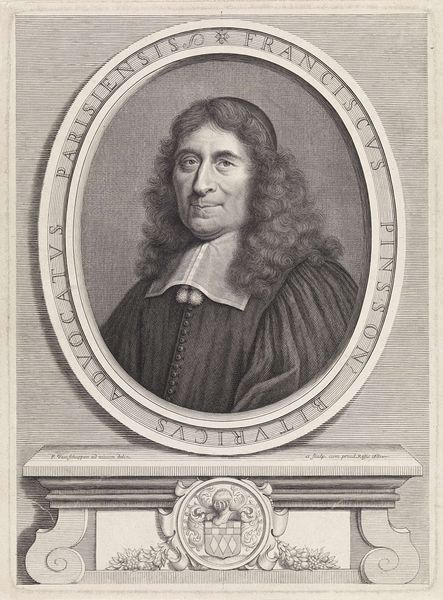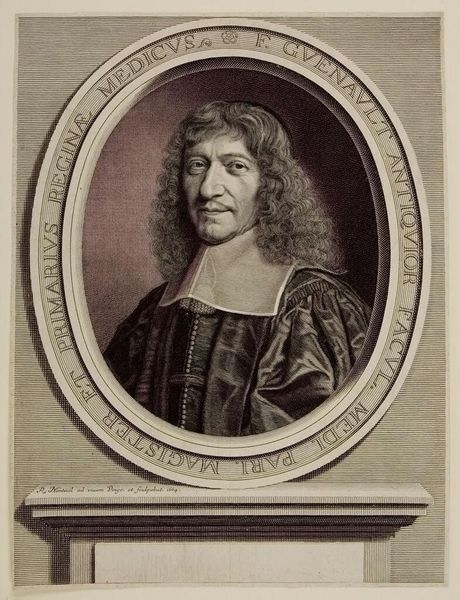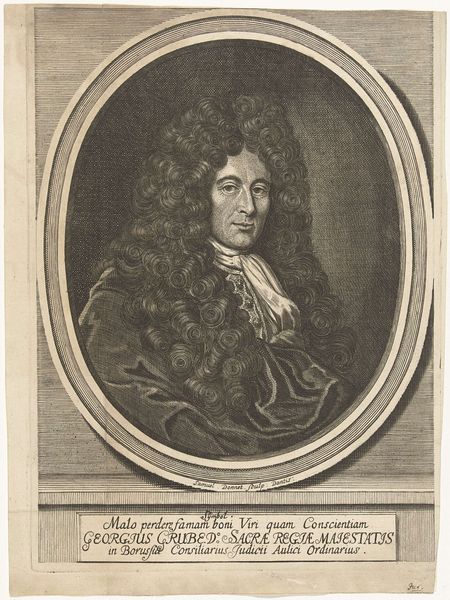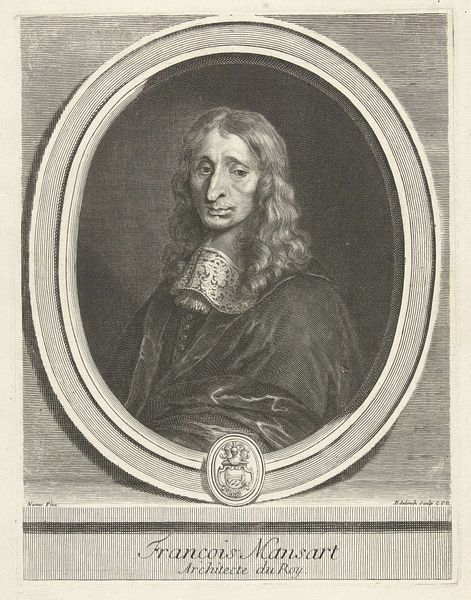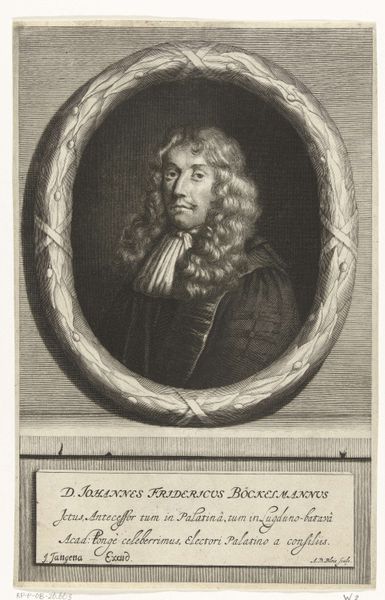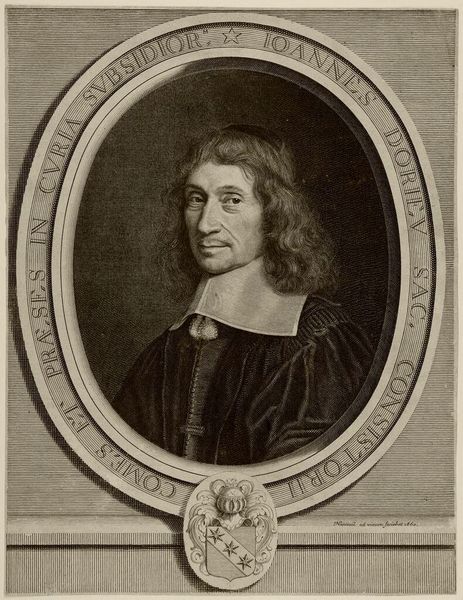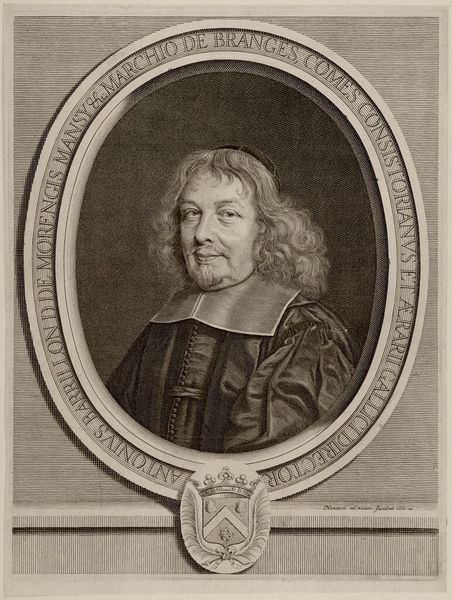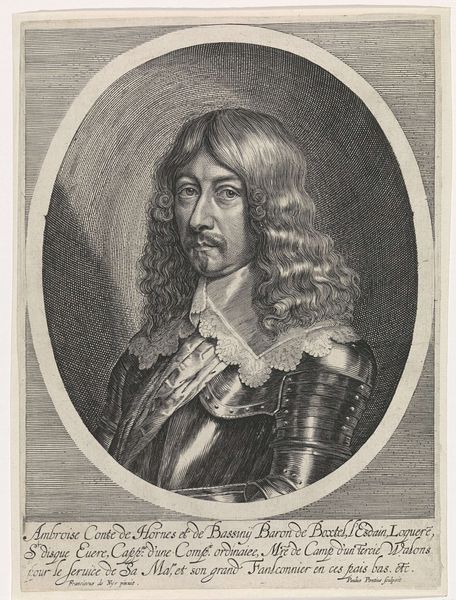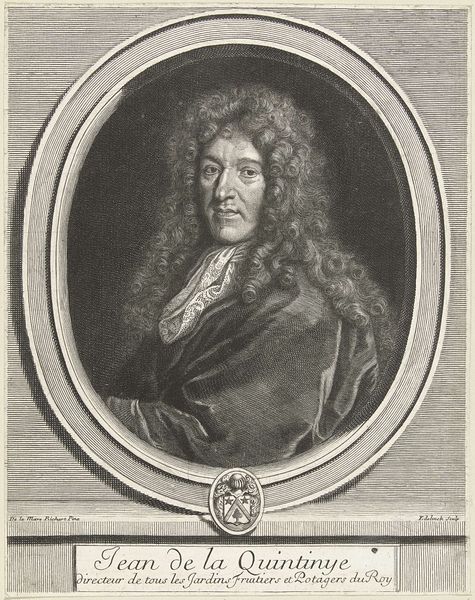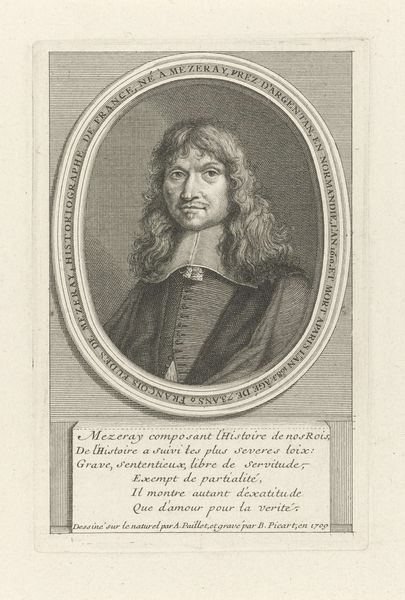
#
wedding photograph
#
photo restoration
#
wedding photography
#
archive photography
#
historical photography
#
portrait reference
#
unrealistic statue
#
old-timey
#
framed image
#
19th century
Dimensions: height 325 mm, width 253 mm
Copyright: Rijks Museum: Open Domain
Curator: Pieter van Schuppen's "Portret van advocaat-generaal Denis Talon," dating from around 1661 to 1668 and residing here at the Rijksmuseum, offers us a fascinating glimpse into the life and status of a 17th-century legal figure. Editor: My initial impression? An intense gaze offset by almost cherubic ringlets and finery. This isn’t just a portrait; it’s a declaration of power mediated through beauty standards, very likely aimed at a specific viewership and reception. Curator: Precisely! It's essential to consider the social and institutional backdrop of such commissioned works. This portrait serves as a potent marker of Talon's professional standing within the legal framework of his time. These images were critical for constructing and broadcasting the identities of powerful men in the service of the State. Editor: Indeed, and the construction of masculinity within these portraits demands further interrogation. While he embodies authority, there's a softness, an almost performative gentility, woven into the image that softens, even refutes conventional notions of masculine power. He wields influence in an era still rigidly defined by patriarchy, and to see softness within it presents a fascinating paradox that demands analysis through modern gender studies. Curator: And thinking about audiences, the original context matters greatly: Was it a private commission intended for a small circle or part of a broader strategy to promote Talon's image? Did his colleagues and adversaries receive this image of himself as authoritative? The historical context reveals the political landscape. Editor: We also cannot ignore how artistic license intersects with social pressures. Was there an element of performative identity happening? Did this representation bolster his career, or invite unwanted scrutiny? Considering feminist theory alongside history helps unpack those power dynamics encoded within. Curator: Absolutely. And seeing that art historically—through the rise of the individual portrait, through shifts in legal systems, and the status of public servants like Denis Talon, gives further depth. Editor: Precisely—historical research and theory provide complementary angles of vision. This is more than a pretty face; it's a layered dialogue on power, status, and visual culture. Curator: I completely agree. By recognizing how the image functions across those lines, we are engaging with an infinitely deeper and more humanistic reading.
Comments
No comments
Be the first to comment and join the conversation on the ultimate creative platform.

